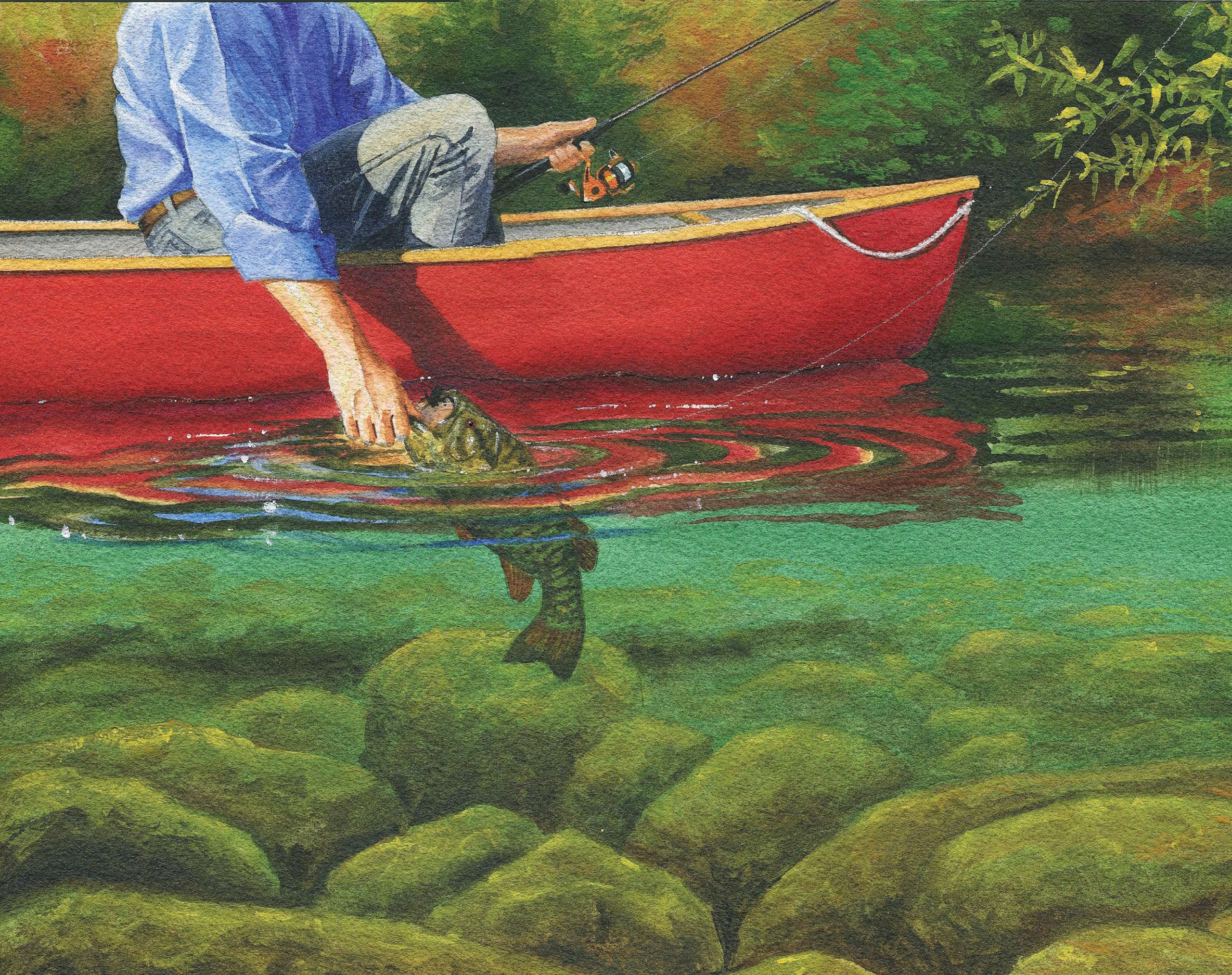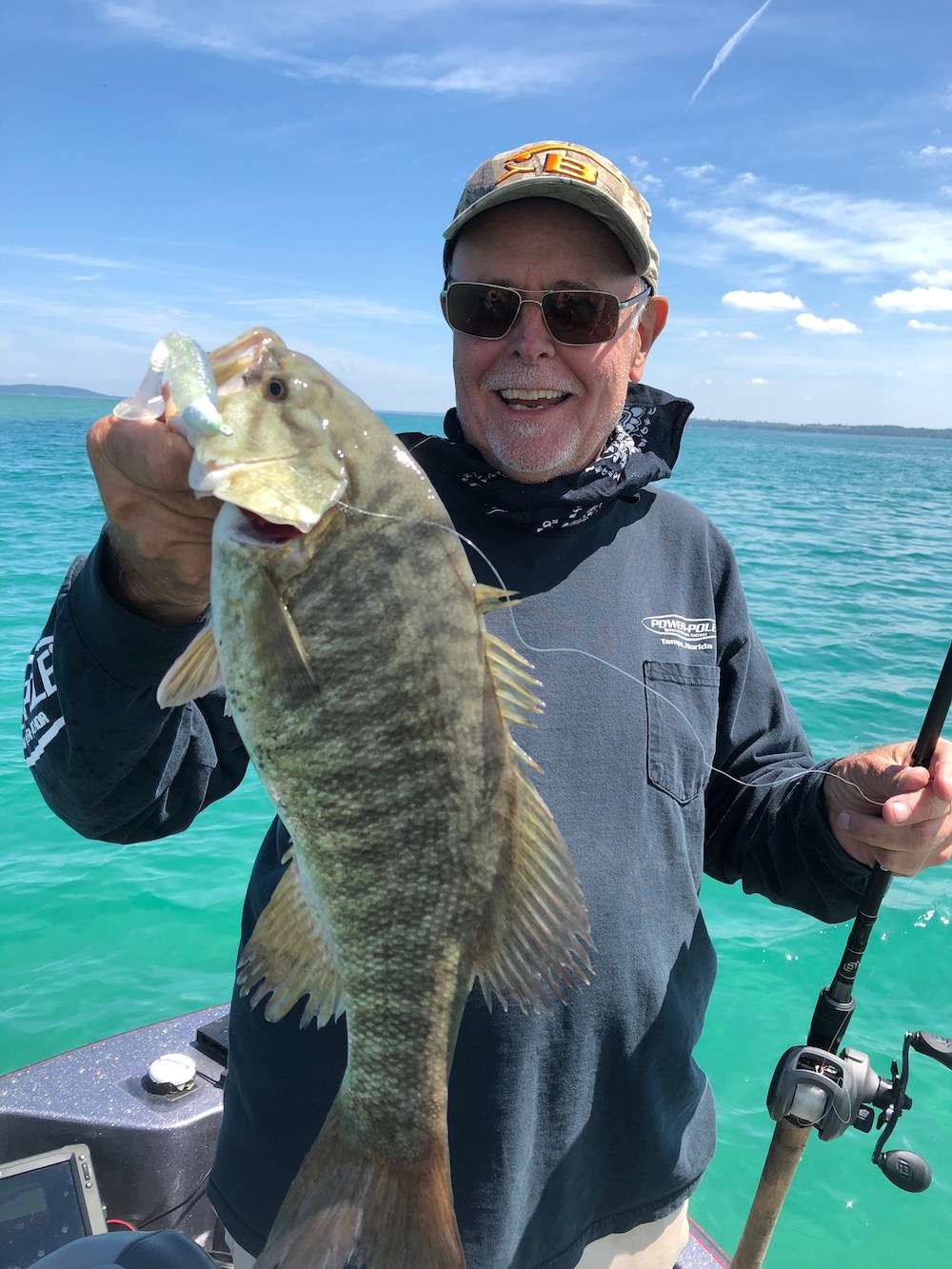
Fall is the perfect time for a float fishing expedition. Nearby rivers and streams can hold plenty of bass, yet receive little fishing pressure; floating them in a kayak, canoe or small johnboat opens up miles of water inaccessible to shore fishermen or waders. Here are some tips for a successful bass float.
Boat gear
“If you’re floating a slow-moving river without shallow shoals, a clamp-on, 12-volt trolling motor comes in handy for positioning the craft for casting and for moving you through the slower stretches at a faster pace,” Nischan advises. “For shallow, rocky streams and faster water, paddles are more practical than a trolling motor; you may have to drag the boat across shoals, and a trolling motor and battery add considerable weight.” The outfitter also brings sunscreen, drinking water, snacks, flotation devices, insect repellent, a first aid kit and a pair of hip boots for launching, loading and pulling the boat across shallow areas.
“A brush hook on a length of nylon rope can secure the boat to a tree branch while you make multiple casts to a bass-holding target, like a submerged tree, and it weighs less than an anchor,” he adds.
Float trip logistics
“Preplanning will help ensure a safe and memorable float trip,” says Chris Nischan, a Nashville-based fishing guide and stream outfitter. “I rely on the Google Earth computer program when planning a float trip; it displays aerial views of the river on your laptop or smartphone. Because it shows the stream in real time, you can often tell whether it’s high, low or at normal water level even before you start getting gear ready for the trip, thereby saving you the hassle and disappointment of driving to the put-in point only to find that stream conditions aren’t suitable for floating.” Google Earth can also reveal suitable put-in and take-out points, he says. “Many rivers and most streams lack launch ramps, so you’ll probably need to transport your boat close to the put-in spot, either on top of your car or in the bed of a pickup truck, then carry or drag it to the water’s edge. Obviously the lighter and more portable your boat, the easier the launching and take-out procedures will be.”
A two-vehicle float is most convenient from a logistical standpoint, Nischan says. “Once the boat put-in (A) and take-out (B) points have been established, you and your buddy drive both vehicles to point B, park and lock one of the vehicles, drive back to point A with your buddy and the boat, then launch. Then when the float is over, load the boat on the second vehicle and drive back to point A to retrieve the first vehicle. If you take only one vehicle, once you’ve finished the float, you’ll either have to call someone for a ride back to the vehicle at point A while your buddy waits with the boat, or hitchhike, which I don’t recommend. Of course, in remote locations, you may not have cellphone service.”
Float tackle and lures
A float trip isn’t a bass tournament, so it’s not necessary to bring a ton of fishing gear. Nischan advises selecting lures matching natural stream forage. “On streams where smallmouth are the dominant bass, bring a few small topwater lures, some ‘creature’ crankbaits that mimic crawfish and minnows, finesse jigs with craw trailers and floater-diver minnow plugs,” he recommends. “A 6 1/2-foot medium action spinning outfit spooled with 8-pound line is perfect for most stream-smallmouth applications. On slow-moving rivers where largemouth prevail, bring a 6 1/2-foot medium action baitcasting outfit spooled with 12-pound line; this is ideal for casting buzzbaits, spinnerbaits, swim jigs and soft jerkbaits to laydown trees and weed edges.” The guide packs his lures in a small utility tacklebox stashed in a backpack along with extra line spools and pliers.
Take it easy
Allow plenty of extra time for your float trip, Nischan says. “The whole point of the experience is to relax and enjoy your surroundings, so don’t rush it. Float craft are typically small and cramped; take frequent breaks to beach the boat and get out to stretch your legs. I’ll often pull the boat onto a gravel bar or mud flat above a bassy-looking spot, like an eddy or deep hole, then make multiple casts to this target from shore.”
Originally published in Bassmaster Magazine September/October 2015

